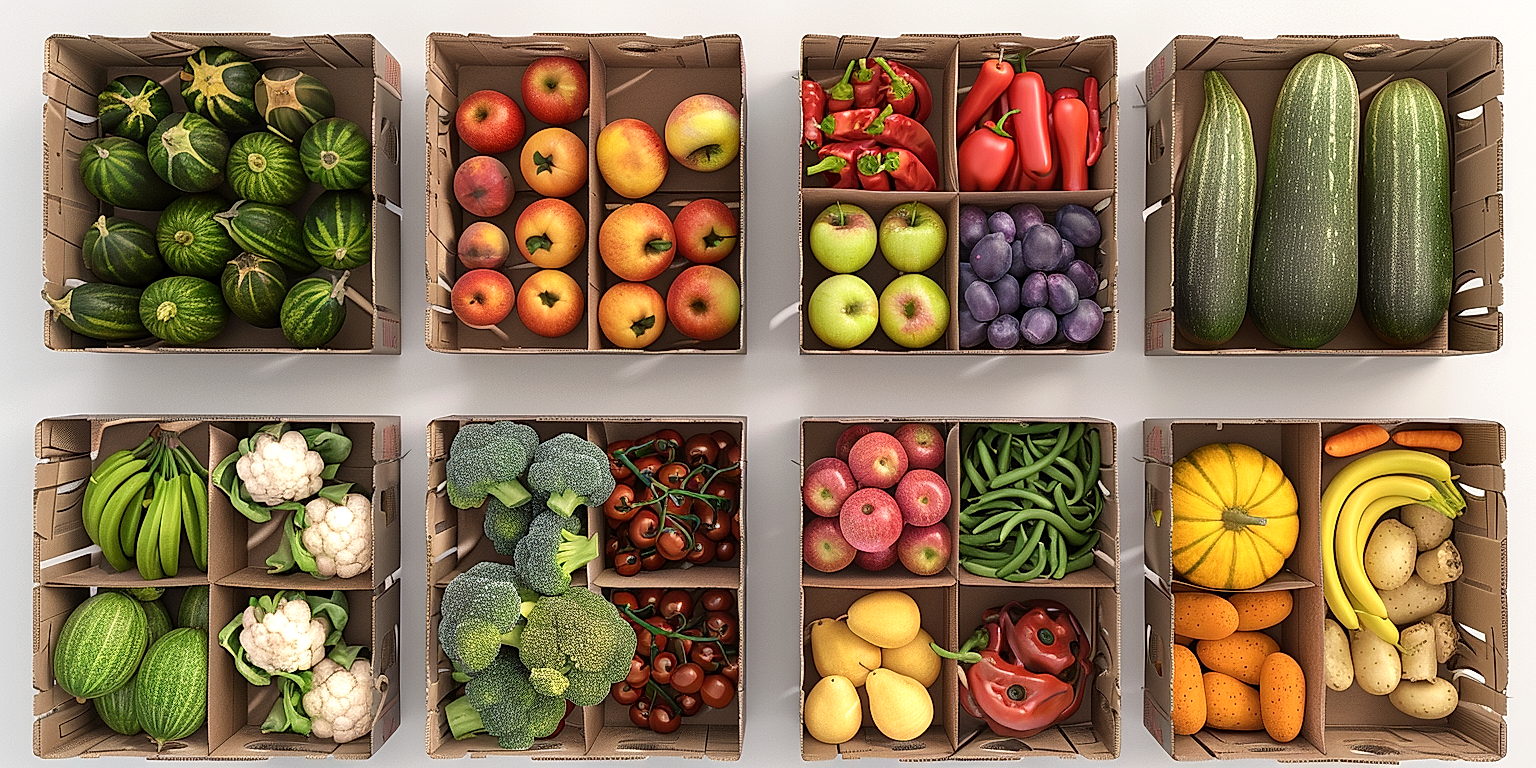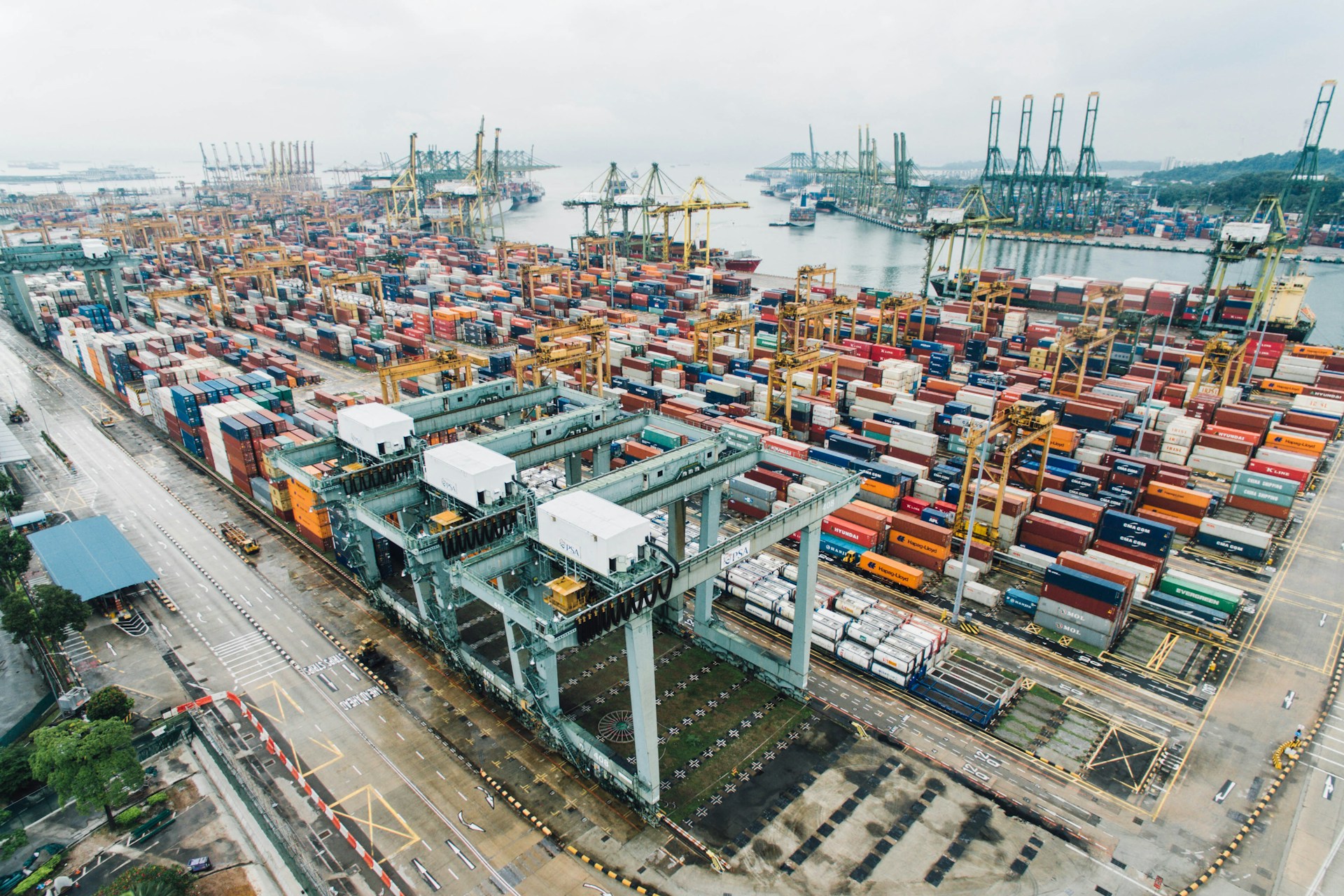The importance of proficient management solutions in the domain of produce shipping can never be overstated.
As an industry that is pivotal to global supply chains, it demands constant innovation and efficiency.
However, achieving ultimate efficiency isn’t a simple task—it requires strategic planning and execution.
The efficacy of these strategies often sets the trajectory of success for companies operating in this space.
In today’s discussion, we shall delve into some essential strategies that can significantly bolster shipping management capabilities.
Undoubtedly, adopting these strategies can be a game-changer for businesses seeking improvement in the way they handle produce shipping.
Key Strategies For Effective Produce Shipping Management
1. Invest in Advanced Shipping and Tracking Technology
To facilitate unsullied and timely delivery of produce, businesses must invest in advanced shipping and tracking technology.
By integrating technology into the shipping process, businesses can gain a real-time visibility of their produce, allowing them to monitor the conditions and estimated time of arrival.
Real-time tracking systems also allows businesses to communicate immediate and accurate information to their customers, enhancing customer trust and satisfaction.
Another significant advantage of having sophisticated shipping and tracking technology is the reduction of discrepancies that often occur in manual data entry.
Using digital logistics platforms does not only help minimize human errors, but it also allows businesses to grow and scale by efficiently managing high volumes of shipping data.
Advanced shipping and tracking technology not only streamline operational processes but also provide a competitive edge due to improved performance and enhanced customer satisfaction.
Furthermore, high-tech shipping methods like cold chain logistics can substantially increase the shelf-life of perishable produce.
Such technologies maintain a consistent temperature throughout the shipping process, thus preserving the quality and reducing wastage.
Also, advanced tracking technology provides automated notifications about any significant deviations or discomforts in the produce’s environment.
With this early alert system, businesses can make timely interventions to mitigate risks and prevent spoilage.
Modern shipping technology also facilitates paperless transactions and digital documentation which increase efficiency and reduce overhead costs.
Investing in scalable and adaptable technology also ensures that the system can easily adapt to changing business needs and market conditions.
Lastly, this advanced technology provides analytical solutions that aid in decision-making and strategy development by offering insights into shipping performance and customer behavior.
These insights can significantly help businesses to improve their shipping operations and make educated business decisions.
Thus, investing in advanced shipping and tracking technology is not just a huge step towards modernization, but it is also a key strategy in achieving effective produce shipping management.
In the end, it is all about ensuring that the produce reaches the consumers in the best possible condition and within the promised timeframe, which is made possible with the right technology in place.
2. Schedule Regular Maintenance for Transport Equipment
Scheduling regular maintenance for your transport vehicles is a fundamental requirement in effective produce shipping management.
By ensuring that your transports are always in top condition, you maximize their efficiency and help prevent any accidental downtime due to equipment breakdown.
Maintained equipment is also more likely to perform at peak efficiency in terms of fuel consumption, which can significantly reduce your operating costs.
Whether you use trucks, trains, or sea vessels to transport your produce, it is imperative that a regular maintenance schedule is set up and strictly adhered to.
By doing so, you can avoid damaging your precious cargo and also ensure that your deliveries are always on time.
This can significantly increase your customer satisfaction and preserve your business’s reputation in the market.
When setting up a maintenance schedule, it is crucial to consider the specific demands and constraints of your transport method.
For example, trucks might need more frequent oil changes and tire checks, while sea vessels may require more in-depth inspections of their hull and propeller systems.
Maintaining a preventive approach to maintenance also means keeping your vehicles equipped with necessary parts and components that often wear over a period of time.
These might range from brake pads for trucks to engine oil for marine engines or even spare tires for all vehicles.
These vital components should all be checked and replaced if necessary during your regular maintenance practices.
Perhaps one of the most vital elements of maintenance is the continually updated training of your maintenance staff.
Your team should be well versed in the latest maintenance and repair practices to ensure that they can efficiently diagnose and fix any potential problems.
Maintenance is also a time to clean your transport equipment, ensuring the high standards of cleanliness required for food transportation are met.
This can help prevent any infection or infestations that may ruin your produce.
It is crucial to understand that in effective produce shipping management, it is not just about getting your goods from point A to B, but ensuring they get there in the best condition possible.
By ensuring your equipment is always operating at its peak, you will not only ensure the safe delivery of your produce but also maintain a positive image and reputation for your business.
3. Prioritize efficient packing and loading techniques
Prioritizing efficient packing and loading techniques forms an integral part of productive shipping management strategies.
It is important to understand that improper packing or loading can lead to irreversible damage to the produce during shipment.
Therefore, implementing innovative and effective packing and loading strategies is necessary to ensure the safety and quality of the produce.
Effective packing and loading form the foundation of an efficient produce shipping process, helping to protect the quality and integrity of the product from the farm to the point of sale.
One such strategy includes using crushproof boxes and bins for packing fruits and vegetables.
These kinds of packing materials provide optimum protection for the produce, preventing bruises or cuts that may affect their quality and market value.
Another essential packing strategy is the use of temperature-controlled packaging solutions, especially for produce that requires specific temperature ranges for preservation.
These types of packages ensure that the produce maintains its freshness and nutritional quality during transportation.
In terms of loading, it is always advisable to follow the last in, first out (LIFO) rule.
This technique reduces the chances of the produce staying too long in the shipment, thus protecting it from potential spoilage or contamination.
Another crucial loading technique is the strategic stacking of the produce boxes or bins inside the delivery vehicles.
This not only ensures maximum space utilization, but also minimizes unwanted movement of the produce during transportation, hence reducing potential damage.
Training staff on the right way to handle, pack and load the produce is just as vital.
Staff should always use gloves and other protective equipment to prevent direct contact, which could lead to the transfer of bacteria or other harmful substances.
In addition, they should be trained on the appropriate loading procedures to prevent overstacking, which could result in crushing of the boxes and resultant damage to the produce.
Ultimately, the efficient packing and loading of produce is a proactive measure to ensure that the products reach their intended destination in the same condition they were harvested, guaranteeing the satisfaction of the end consumer.
4. Establish reliable supplier and carrier partnerships.
Developing a successful produce shipping operation requires the establishment of trusted supplier and carrier partnerships.
Companies must vet suppliers critically, understanding their production process, quality control measures, and their overall reliability.
This creates a foundation of trust and ensures consistency in quality and supply.
Beyond the suppliers, forming successful partnerships with carriers is just as critical.
The choice of a carrier influences the overall integrity of the produce, affecting its condition upon delivery.
When selecting a carrier, consider their track record, reputation, and how they handle produce.
Carriers with prior experience in handling perishable goods are often a safer choice.
They understand the importance of maintaining correct temperature and humidity levels, necessary precautions during load and offload, and can adapt to unexpected changes swiftly.
Additionally, a carrier with an extensive reach ensures your produce can get to its intended destination when it’s still fresh.
An extensive network also opens opportunities to expand into new markets.
Flexibility in scheduling and capacity is another crucial aspect in a carrier partnership.
In the produce shipping industry, delayed dilemmas are common – poor weather, unpredictable harvests, and fluctuating demand can cause deliveries to be postponed.
Reliable carriers acknowledge these challenges and are flexible enough to accommodate changes in schedules or volumes.
Moreover, transparency in communication is vital.
Partnerships thrive on transparency – involving the exchange of information about produce handling, delivery times, and possible challenges.
This openness prevents misunderstandings, contributing to a seamless shipping operation.
Regular meetings and audits with both suppliers and carriers can also help track and improve data-driven performance metrics.
In essence, the key to a successful produce shipping operation lies in the ability to establish reliable supplier and carrier partnerships.
5. Implement rigorous produce quality control measures.
In the context of effective produce shipping management, nothing is more essential than the implementation of a rigorous, robust shipping and handling status check protocol.
Knowing the condition of your produce at every step of the supply chain is a necessity, rather than a convenience.
The integrity of fresh produce is measured not just by kilos or cubic volume, but also by its continued freshness and quality.
This is because the final consumer judges the produce not on its weight, but on its freshness, aroma, texture, and taste.
At every stage of the shipping process, a comprehensive quality control process needs to be in place.
In a properly outlined system, dedicated Quality Control Inspectors take samples on a regular basis and evaluate them based on established parameters for freshness, texture, taste and aroma.
Any produce found falling short of the quality parameters is set aside, preventing any negative impact it might have on the rest of the batch.
These inspectors are essential in maintaining the highest standards of freshness and quality.
Their training and experience enables them to spot issues that may not be apparent to someone not specifically trained in quality control.
Quality control measures also include measures to control and monitor the packaging and transportation conditions.
All these elements work together to ensure that the shipped produce arrives in excellent condition, ready for the consumer’s table.
The entire process may sound complex, but with the correct application of technology and trained personnel, it becomes second nature and a critical component of the shipping management process.
It is vital to remember that any failures in this chain can have a profound negative impact on the supplier’s reputation, customer satisfaction, and ultimately sales and profitability.
Therefore, investing the time, personnel, technology and other resources into a fully-realized, rigorous produce quality control process is money well spent.
Taking the time to ensure an effective quality control system not only protects the supplier’s reputation and customer satisfaction but can also save significant costs in the longer term.
To conclude, produce quality control is not just a necessary part of effective produce shipping management, but a critical component which demands the utmost attention.
The Bottom Line
Embracing advanced shipping and tracking technology is an integral part of enhancing supply chain efficiency.
Alongside this, the assurance of optimum transport equipment condition through regular maintenance remains paramount.
Leveraging efficient packing and loading techniques can drastically minimize waste and optimize space.
Robust relationships with suppliers and carriers are invaluable, as they enhance reliability and promote timely transactions.
Lastly, stringent produce quality control measures often serve as the gatekeeper to customer satisfaction and repeat purchases.
Ultimately, these strategies are fundamental in ensuring the growth and sustainability of any business operating within the competitive landscape of today’s supply chain industry.




